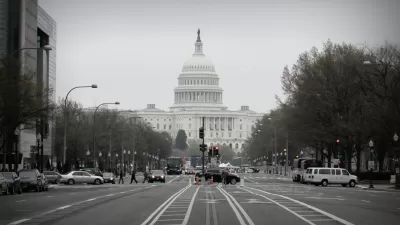Prohibiting single-family zoning alone won’t accomplish the needed transformation of the built environment in the United States.

A “spotlight on zoning practice” published this week by the American Planning Association (APA) goes into detail on some of the considerations in zoning codes other than land use that can contribute to housing equity. The “spotlight” provides insight into a longer piece written by John Zeanah for the May 2022 issue of Zoning Practice.
“Proposals to eliminate zoning districts that permit only single-family homes have dominated zoning reform discussions for the past five years. But focusing narrowly on getting rid of, so called, single-family-only zoning is unlikely to dramatically increase the supply of housing in most communities,” begins the post.
So what other zoning considerations can support missing middle housing and housing equity, according to Zeanah? The article lists two: 1) rightsizing bulk standards and 2) revisiting building codes.
On the first recommendation, Zeanah cites a 1991 report, “Not in My Backyard,” prepared by the Advisory Commission on Regulatory Barriers to Affordable Housing and presented to then Secretary of Housing and Urban Development Jack Kemp.
“Zeanah suggests planners should evaluate opportunities to relax bulk standards that make it difficult to fit multiple residences on a lot as well as those that require larger lots than the market would otherwise provide. These include standards that stipulate a minimum lot size or lot area per dwelling unit and those that establish a maximum building height.”
FULL STORY: Going Beyond "Use" Zoning to Promote Housing Equity

Study: Maui’s Plan to Convert Vacation Rentals to Long-Term Housing Could Cause Nearly $1 Billion Economic Loss
The plan would reduce visitor accommodation by 25,% resulting in 1,900 jobs lost.

North Texas Transit Leaders Tout Benefits of TOD for Growing Region
At a summit focused on transit-oriented development, policymakers discussed how North Texas’ expanded light rail system can serve as a tool for economic growth.

Why Should We Subsidize Public Transportation?
Many public transit agencies face financial stress due to rising costs, declining fare revenue, and declining subsidies. Transit advocates must provide a strong business case for increasing public transit funding.

How to Make US Trains Faster
Changes to boarding platforms and a switch to electric trains could improve U.S. passenger rail service without the added cost of high-speed rail.

Columbia’s Revitalized ‘Loop’ Is a Hub for Local Entrepreneurs
A focus on small businesses is helping a commercial corridor in Columbia, Missouri thrive.

Invasive Insect Threatens Minnesota’s Ash Forests
The Emerald Ash Borer is a rapidly spreading invasive pest threatening Minnesota’s ash trees, and homeowners are encouraged to plant diverse replacement species, avoid moving ash firewood, and monitor for signs of infestation.
Urban Design for Planners 1: Software Tools
This six-course series explores essential urban design concepts using open source software and equips planners with the tools they need to participate fully in the urban design process.
Planning for Universal Design
Learn the tools for implementing Universal Design in planning regulations.
City of Santa Clarita
Ascent Environmental
Institute for Housing and Urban Development Studies (IHS)
City of Grandview
Harvard GSD Executive Education
Toledo-Lucas County Plan Commissions
Salt Lake City
NYU Wagner Graduate School of Public Service





























